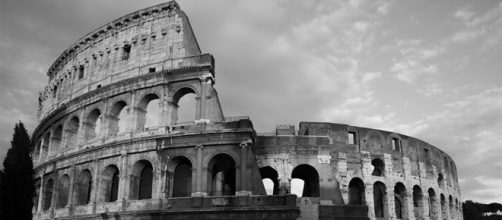According to new research in the peer-reviewed scientific journal, 'American Mineralogist' scientists have finally figured out the mystery behind what made the concrete of Ancient Roman harbors so strong and durable. In another ancient discovery, archaeologists in china have discovered 5,000-year-old "giants."
The Ancient Roman's concrete recipe
More recently built modern day harbors made out of cement-based concrete have crumbled into the sea only decades after being built, while the harbors of Ancient Romans are still standing strong about 2,000 years later.
Now scientists have finally discovered what the Romans used to make their ancient concrete so powerful. The concrete that the Romans used for their harbors and sea walls was made by mixing aluminum tobermorite, lime, rock, seawater, and volcanic ash.
This combination of materials produces a "possolanic reaction", where elements in the ash react to the ocean's water, which strengthens the concrete. The aluminum tobermorite is the biggest key to adding strength, as the tobermorite crystallites and spreads when exposed to seawater. Over time, these crystals continue growing, which stops cracks from spreading and reinforces the material.
In comparison to the Ancient Romans modern day concrete gets eroded over time by the battering of waves and ocean water.
The use of the Romans method would be more environmentally friendly since it would not emit carbon dioxide. The researchers said that it would make more sense to use for certain construction projects in terms of long-term cost and use.
The 5,000-year-old "giants" of China
Archaeologists in the Shandong province of China has discovered abnormally tall and strong 5,000-year-old skeletons that are being referred to as "giants." According to measurements done on the remains, quite a few people would have been five foot nine (1.8 meters tall), with one man estimated to have been six foot two (1.9 meters tall).
While this height is normal by modern standards, these men would have towered over many of their peers. The remains were found at an excavation site in the village of Jiaojia. So far archaeologists at the site have uncovered 205 graves, 104 houses, 20 sacrificial pits and many colorful pots and jade objects. This region is believed to have been the epicenter of China 5,000 yeas ago, with the men likely being so tall due to their higher status, which in turn gave them access to better food.


